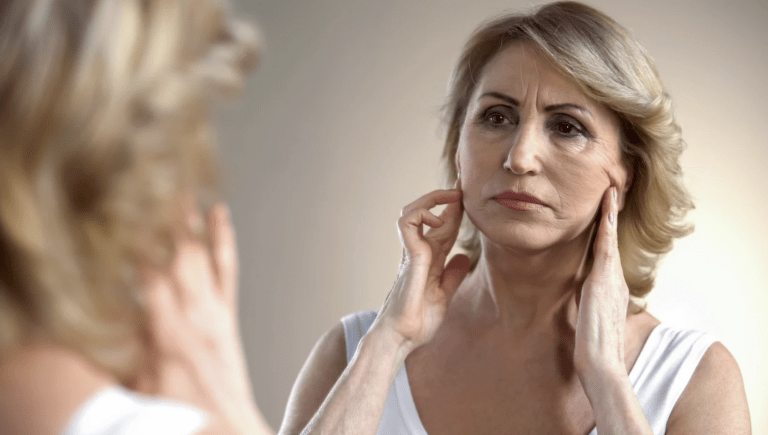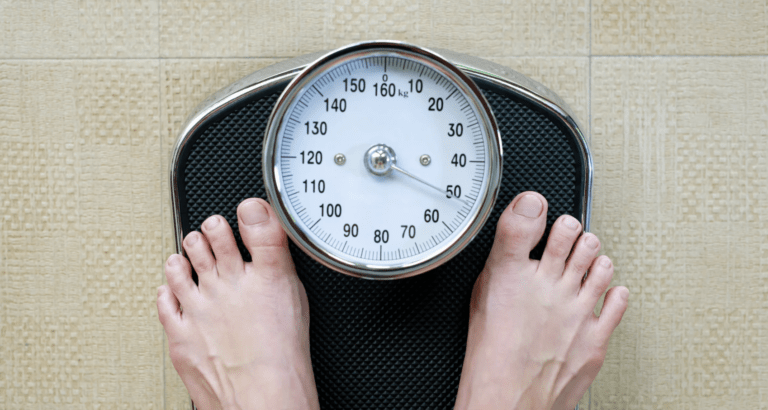- Breakthrough For Ehlers Danlos Syndrome and Endometriosis - 13 March 2025
- Does EDS get worse as you age? - 20 February 2025
- Can Ehlers Danlos Syndrome Cause Weight Gain/Loss? - 18 February 2025
It’s been pretty well established that exercise is one of the most beneficial things a person with Fibromyalgia can do, as long as it’s done correctly. However, is there any way to get more benefits from exercise?
Well, as it turns out, taking your exercise to the great outdoors can bring about a whole host of additional benefits. Which is what this blog is all about: what happens when we take exercise outside when we have Fibromyalgia?
Now, keep in mind that for those in pain, exercise can often be a word that brings about some ill feelings. When you are in pain, exercise is quite literally the last thing on your mind. However, the research is there, and we should be exercising to help with chronic pain symptoms, so you really need to view exercise through a different lens.
Exercise isn’t about dedicating a specific time during the day to torture yourself into a sweaty mess, it simply means just moving. That can include a little bit of housework, a short walk, or even playing with kids. Changing the narrative around exercises is most likely just as important as the actual exercise, so don’t get it in your mind that you need to be dripping in sweat, you just need to move.
However, if ever there was a reason to switch your movement to the great outdoors, it is because of the large body of evidence that shows the immense benefits of doing so. Likewise, one of the healthiest, cheapest, and most effective ways to exercise is walking, and when you combine it with the outdoors, the benefits really start to add up.
One study of 20,000 people, across different ethnicities, work and disabilities, found that just 2 hours spent in nature per week, were substantially more likely to report good health and psychological well-being than those who don’t. Likewise, spending time outdoors may potentially be a large factor contributing to things such as better sleep, less pain, and less catastrophising (great for those with chronic pain condition like fibromyalgia), and many other benefits that likely come from exposure to both sun and nature.
An important point to note here is just how important sleep is for those with Fibro. he relationship between sleep disturbances and pain has been widely studied. Most of the research shows us that an increase in sleep disturbances comes with a sharp increase in pain. It is not only well established that poor sleep directly causes more pain, but also a swift decline in physical functioning and mood, especially during the early parts of the next day. Likewise, studies even show that a good night’s sleep appears to offer a temporary respite to pain, pushing us further down the rabbit hole that pain is an incredibly complex beast, and often, at times, is just plain weird. So, then anything we can do to counter this is something we should really consider!
Keep in mind also, that there are many ways to incorporate outdoor walking into our daily routines, such as taking a walk during our lunch break or going for an evening stroll after. Even a 30-minute daily walk can provide significant health benefits. I encourage everyone to make exercise, especially when combined with the outdoors, a regular part of their day and to take advantage of the many physical and mental health benefits that come with spending time in nature whilst exercising.
This article covers:
TogglePhysical health benefits
The biological benefits of exercise, and indeed doing outdoors are numerous. An interesting study was conducted to see the effects of exercise on women with fibromyalgia when it came to Nordic walking. Nordic walking is a fun and unique form of exercise that’s grown in popularity over the last decade or so. It’s similar to regular walking, but, with the addition of special poles that add an extra challenge to your workout. The poles help to activate your upper body and trunk muscles, as well as improve your balance. It’s a great way to get in some cardio and build strength all at the same time.
But I digress!
The women with Fibromyalgia in this study were divided into two groups, one did moderate-to-high-intensity Nordic walking and the other did low-intensity walking. The results showed that the Nordic walking group had improved physical function and fitness compared to the low-intensity walking group. However, both groups showed reduced pain and fatigue. The study suggests that Nordic walking is a safe and effective form of exercise for people with fibromyalgia and can help improve their physical fitness, regardless of how hard you go at it.
Likewise, many people with Fibromyalgia have found exercise such as Tai Chi, a form of self-defence to be one of the best forms of low-intensity exercise that helps with pain. In fact, one study found that yang-style Tai Chi was one of the most effective forms of exercise when it came to Fibromyalgia, producing results fairly quickly, with very limited pushback or side effects. The real benefit here is that Tai Chi can be done outside and with friends, effectively adding even more benefits to it. Likewise, for those with Fibro who may fear moving, Tai Chi adds a gentle introduction to exercise, whilst maximising the benefits.
Mental health benefits
The mental health benefits of exercise for those with Fibro are numerous as well. Exercise is not just about physical health and appearance; it has a profound impact on our mental well-being. People who engage in regular exercise report feeling more energetic, relaxed, positive, and sharp throughout the day. Exercise is a powerful medicine for common mental health challenges, including depression, anxiety, ADHD, and stress.
Studies have shown that exercise can treat mild to moderate depression as effectively as antidepressant medication, without any of the side effects. Regular physical activity can also relieve tension and stress, improve memory, boost overall mood, and help individuals sleep better. Exercise is a natural and effective anti-anxiety treatment, as it releases endorphins in the brain that make you feel good.
Green exercise for Fibromyalgia, basically just doing it outside, looks to be pretty effective at boosting the mood of those with Fibro. One study of 113 adult patients from a chronic pain clinic completed a questionnaire. The results showed that 94% of the participants felt that nature improved their mood. However, 38% reported that they would not be able to commit to three times a week of green exercise, but, over half expressed interest in their healthcare professional discussing green exercise with them.
I say this a lot, but you really don’t have to spend hours at the gym to reap the benefits of exercise. Just 30 minutes of moderate exercise five times a week is enough, and even that can be broken down into smaller sessions, if that’s easier or if you feel like you may struggle. If you’re short on time, or your pain levels are up, start with 5-minute sessions and gradually increase your time. The key is to commit to some physical activity, no matter how little, on most days. As with everything, consistency is key.
Social benefits
The social benefits of exercise for those with Fibro are possibly one of the most forgotten aspects if overall health. This is a shame because we are social creates by nature, and when we have pain, we tend to limit our social interactions, which then limits the benefits we should be gaining.
Working from a Biopsychosocial standpoint, we here at The Fibro Guy, love anything that can encompass all the factors that mediate and create health and wellness. This is why we always suggest never neglecting social factors.
There is a significant body of research that has examined the relationship between social interactions and mental health. Some studies have found that social support, whether in the form of close relationships with family and friends or participation in social activities and groups, can have a protective effect on mental health. For example, a meta-analysis of 148 studies found that social support was significantly associated with reduced risk of depression and anxiety, as well as increased well-being and life satisfaction. Another study found that social connections were associated with a 50% reduced risk of early death, and that the protective effect of social connections was similar in magnitude to that of well-known risk factors such as physical inactivity and obesity.
It is very clear-cut that humans need other humans and that things go south very quickly when we don’t have social interaction.
In a nutshell
So then, with everything we have discussed, let’s have a quick recap and come up with some action points for you at home reading.
Exercise doesn’t need to be intense; you just have to move. So, find something that you enjoy. You would be amazed at how quickly people can start to love moving when it’s enjoyable. Many of our clients often end up buying Virtual Reality headsets to play games and to exercise with after they have used them in the studio with our Fibro Guy practitioners.
Get outdoors. With the benefits we have discussed, you should understand just how beneficial being outside is when it comes to pain. So, even if you are not exercising, try and aim to just get outside and out of the house. Likewise, the exercise you do outside doesn’t need to be hardcore, just basically anything really.
Do it with friends. Support is essential when you have chronic pain. Show your friends this article, bundle them into the car, and perhaps try some group Tai Chi in a local park. You can have a good natter about Linda across the street, you can distract yourself from life’s worries, and you can give your brain some much-needed rich and novel sensory input. Keep in mind also, that when brains don’t know the exact movements that cause pain, they will just guess, this means you end up with a lot of movements that should be absolutely fine, but now they are not. So, you need to explore your movement.
In the land of Fibromyalgia, novel and rich sensory information is king!
We hope you enjoyed reading and hope you take onboard and implement the action points we made for you.
Until next time friends.
The Fibro Guy team
Enjoyed Our Blog? Why Stop Here?
If you’ve found value in our posts, imagine the impact of a structured, science-backed course tailored specifically for fibromyalgia and its unique challenges. The Full Body Fibro Course is your ultimate starting point for understanding your body, improving mobility, and managing symptoms effectively.





